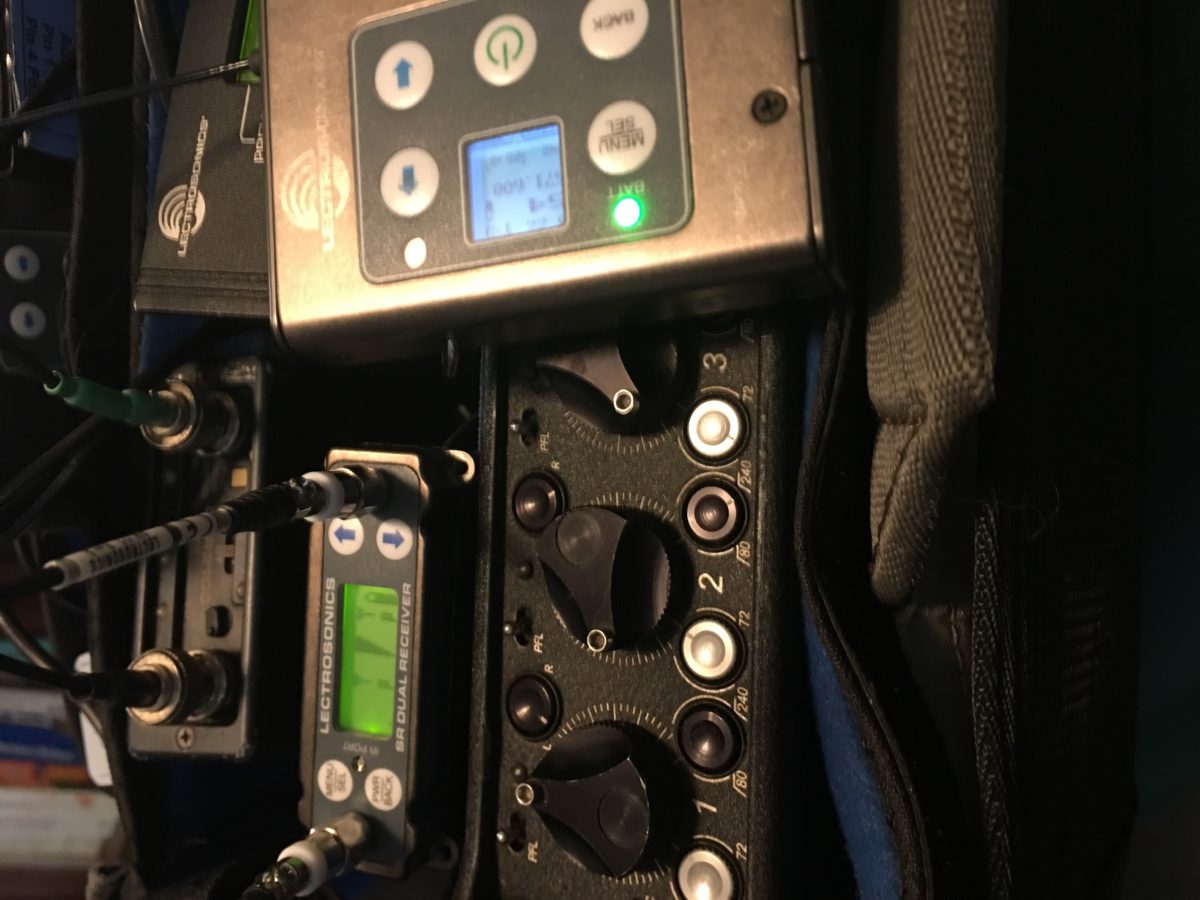Wireless Microphones In Today’s Crowded RF Spectrum
The radio spectrum for wireless microphones is getting really crowded. Really, really crowded. And if you’re a producer you should be concerned.

So why should you be concerned? Well because your production is likely a source of a lot of wireless pollution and potentially a could be compromised by technicians who are not familiar with how the RF spectrum is changing and adapting their use of wireless microphones and other equipment appropriately.
First, let’s talk about all the different devices now on set that are reliant on good RF communication.
- Wireless microphones
- Wireless focus control for cameras
- Wireless lighting controls
- Wireless video monitors
- IFB for talent
- IFB for producers
- Wireless hops for camera
- Drones
- Walkies for the production crew
- Coms for the camera team
- Coms for the audio team
- Everyone’s cell phone
- Wireless computer networks
- Computer hot spots
I think you’re starting to get the picture. Now imagine you’re on a big studio lot and begin to think how much RF might be bouncing around between different sets. Now add all the television stations, radio stations, emergency broadcasters, corporate communications, hobby broadcasters out there.
It’s starting to sound like a mess. And frankly, it is. Especially in more urban areas. But it gets worse.
About 10 years ago the FCC sold parts of the wireless spectrum to cellphone operators that we in the film and television business have been using for decades. This meant manufacturers had to redesign all of their equipment and we in the audio department had to buy new and much more expensive equipment. Professional wireless audio equipment is far from cheap. This meant tens of thousands in investments for most professional sound mixers.
Selling off the spectrum also means TV stations are moving around a more crowded spectrum and making our jobs a lot harder. In some locations we see a fair amount of open spectrum but more often we see a lot less available to work with. It’s a moving target and requires us to be adaptable and have the newest wideband equipment with more options for frequencies.
As a producer, 10 years ago, I had a pretty good chance of not having any RF issues on set. Today in urban areas it may be problematic to even get an open frequency to run one mic much less 20 different channels for talent, cameras, and producers. This makes it essential for producers to employ technicians on your set who have a strong understanding of the RF landscape. Feel free to reach out to me if you’d like to discuss RF issues on your next production.
Posted on: December 16, 2019, by : Jimmy Gilmore